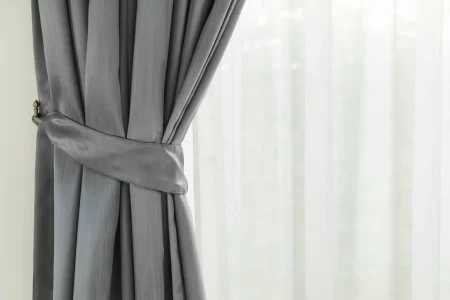 When it comes to interior design, curtains play a significant role in enhancing the aesthetic appeal of any space. However, selecting the right curtain material can be a daunting task with numerous options available.
When it comes to interior design, curtains play a significant role in enhancing the aesthetic appeal of any space. However, selecting the right curtain material can be a daunting task with numerous options available.
This post aims to guide you through the process, highlighting key factors to consider when choosing the perfect curtain material that complements your style and meets your functional requirements.
Fabric Types and Their Characteristics
Understanding the different fabric types is essential in determining the right material for your curtains. Here are some popular options and their characteristics:
- Cotton. A versatile and breathable fabric, cotton curtains offer a natural and relaxed look. They are easy to maintain, durable, and available in various patterns and weights.
- Linen. Known for its crisp and textured appearance, linen curtains bring an elegant and sophisticated touch to any room. They offer excellent light filtration and are ideal for achieving a timeless, casual look.
- Silk. Luxurious and opulent, silk curtains add a touch of glamour and elegance to any space. They drape beautifully and offer a soft, lustrous sheen, but they may require more care and maintenance.
- Polyester. A practical and budget-friendly option, polyester curtains are durable, easy to clean, and resistant to wrinkling. They come in a wide range of colors and patterns, making them suitable for various design styles.
Light Control and Privacy
Consider the amount of natural light you want to filter and the level of privacy you require in the room. Sheer and lightweight fabrics like voile or lace provide a soft and diffused light, allowing privacy while still letting in sunlight.
Heavier materials like velvet or blackout curtains are ideal for bedrooms or spaces where light control and privacy are paramount.
Insulation and Energy Efficiency
Curtains can also contribute to the insulation and energy efficiency of your home. Thicker fabrics like velvet or thermal curtains help retain heat during colder months, reducing energy consumption.
Similarly, they can block out heat from entering during hot summers, keeping your space cooler and more comfortable.
Style and Design Considerations
The curtain material should complement the overall style and design of your space. Consider factors such as color, pattern, and texture to ensure the curtains blend seamlessly with your existing decor.
Bold patterns and vibrant colors can make a statement, while neutral tones offer versatility and a timeless appeal.
Maintenance and Durability
Evaluate the maintenance requirements and durability of the curtain material. Some fabrics may require professional cleaning, while others are machine washable.
Additionally, consider the fabric’s durability, especially if the curtains will be subjected to heavy use or direct sunlight.
Selecting the right curtain material involves a careful balance between functionality, style, and personal preference. Remember, curtains are not just decorative elements; they also serve a practical purpose in providing privacy, controlling light, and contributing to the overall ambiance of your home.
Picture Credit: VistaCreate



